Martin’s note: This is the 1,000th article on Gnome Stew! We went live on May 12, 2008; here are our initial welcome article and all of our launch day articles. Thank you for reading the Stew, spreading the word, and supporting the site for the past three years! We love sharing GMing advice and we love our readers — happy gaming to you all!
And now, on to today’s article…
In styles of play where the PCs start out as relatively low-powered or inexperienced nobodies, and where there’s a story arc that runs through the entire campaign, there’s a key moment that makes this kind of campaign so much fun: the tipping point.
This progression — from zero to hero — is most common in fantasy games, hence the title of this article, but it’s certainly not unique to them. Nor is it the One True Way to do things (One True Ways are always bullshit), either — it’s a way, and a way that works, but there are lots of other ways that work, too.
With those disclaimers out of the way, then, what is the tipping point?
The tipping point is the moment when the party shifts from being reactive to proactive.
Let’s unpack that statement and see where it leads.
The Tipping Point Campaign Structure
When the campaign begins, the PCs are dealing with threats as they arise, maybe getting a sense for the overall story arc of the campaign, but not driving the action. The GM is driving the action. At the start of each session, the PCs have stuff to deal with; the sessions are about them dealing with that stuff — the PCs are reactive, not proactive.
In the latter portion of the campaign, the PCs are more powerful, more deeply connected to the world and to the storyline, and they have an agenda and the capacity to significantly advance it — they shift from being reactive to being proactive, and start driving the story and the action.
Before the Tipping Point
That’s not to say that the PCs (or the players) were passive observers during the early sessions of the campaign — far from it. They were raiding dungeons, taking down vampire counts, and otherwise doing awesome things. But fundamentally, the structure of most adventures looked like this:
The PCs are presented with a problem to solve >>> They come up with a solution >>> They solve it
That’s a solid, basic approach to adventure design that works for many GMs and many groups. It minimizes floundering, maximizes time spent having fun, and needn’t involve the bad kind of railroading or any downsides at all.
After the Tipping Point
Later on, though, adventures look more like this:
The PCs decide what’s important to them >>> They come up with a plan for doing it >>> They do it
These adventures might be similar in structure, but they’re dramatically different in tone. These later adventures make it obvious to your players how important their PCs are in the game world, and they feature numerous “callbacks” to past adventures and other elements that emphasize the PCs’ prominence.
The Tipping Point
In between those two modes or stages of play is the tipping point — the point where the PCs go from reacting to things you throw at them to actively pursuing the party’s goals.
The tipping point could be a single adventure, the achievement of a particular goal, a mechanical milestone (for example: hitting 10th level in D&D), a particularly memorable scene, or whatever works for the campaign — what matters is that the game feels dramatically different after the tipping point, and that the whole group recognizes that the tipping point has arrived.
Done right, this is an awesome moment, and one that helps keep your group from burning out or yearning for something new — because it’s something new inside the framework that you’ve all grown to love. It’s a new way to play the same game, but it doesn’t set aside anything that’s gone before.
Why Use the Tipping Point Model?
From 10,000 feet up, this is a powerful archetype for creating an epic, heroic fantasy campaign. It taps into genre tropes (the progression from zero to hero), genre touchstones (like The Lord of the Rings), and the mechanical structure of many fantasy RPGs (where the PCs grow in power over time).
Is it basic? You bet. Could it even be called cliched? Sure it can. But the important thing is that it’s fun, it’s satisfying, and it works.
It also provides some enjoyable challenges for you as the GM:
- It forces you to structure the entire campaign, at least loosely, from the outset
- It prompts a change in your GMing style and prep after the tipping point, as you have to create fun adventures based on the PCs’ goals, rather than just creating fun adventures
- This model also forces you to manage your time wisely, making sure that the PCs hit the tipping point when it feels right
- For it to work, you have to talk to your group about the game, and keep your finger on the pulse of your players’ interests
The first item on that list is just one approach among many, not gospel; the second is a good thing to do throughout your GMing career — challenge yourself to develop new skills. Numbers three and four, though, are fantastic things to do in any game.
The better you manage your time during the game, and the more in touch with your group’s tastes you are, the happier your entire group will be and the more fun you’ll have at the gaming table.
Put all of that together, and you have a simple yet powerful model for a structured, long-term campaign which teaches you how to be a better GM and, if done right, virtually ensures that your group will have a great time.
As Old as the Rocks Themselves
I didn’t invent this approach, not by a long shot — hell, it’s baked right into every edition of D&D from a mechanical standpoint, and D&D is the seed from which virtually all other RPGs sprang. This model is in many gamers’ DNA, and it’s been around for decades.
I wrote this article because I believe that giving it a name and calling it out explicitly, independent of any particular RPG, is useful. You can use the Tipping Point Campaign structure to frame a particular style of campaign, and odds are that your group will have a great time playing that campaign.
It’s been around for decades because it just plain works, and I hope that a look at its guts will help it work better for you and your group.
If you’ve got feedback or pointers on running a Tipping Point Campaign of your own, I’d love to hear from you in the comments!







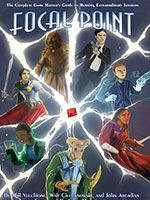
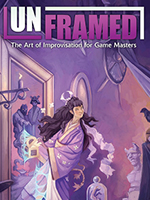

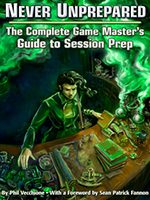
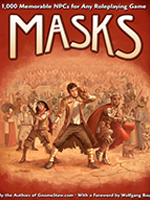
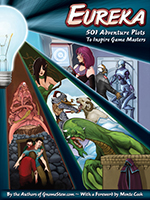
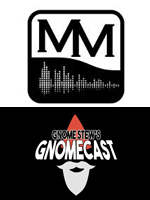

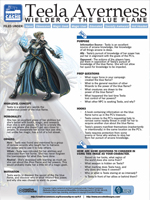
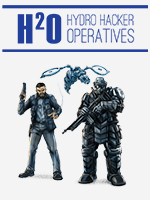
I recognize this tipping point thing and I can look back at earlier campaigns and pretty clearly say “Yep, this is when it happened” – but, and here’s my question: How would one see it coming in advance? Most of the time it’s just come as a sort of surprise to me – the players go “All right, we’ve defeated the evil King, now I think we should go for the hidden monastery because I want to learn martial arts” and to me, it often seems to happen kind of out of the blue.
What I’m saying is, this has happened in my games but often it’s a spontaneous thing, rather than something I plan for. How would you go about making it happen?
@Riklurt – There are two main ways to make it happen:
1. Script it in advance — IE, decide when it’s going to happen. That’s the easiest way.
2. Keep an eye on the horizon, and make it happen when it feels right. This is a bit harder, but will tend to feel more organic to your players.
Either the system or the story or both will give you cues for #2. In D&D, the system gives you strong cues — to take one example, in 3.x when the party’s arcane spellcaster starts being able to do really funky shit, you’ve likely reached the tipping point.
The story cues can be fuzzier, since they depend on your specific campaign. But in general, if the PCs are becoming movers and shakers, with lots of clout in the world and the ability to influence large-scale events, you’ve reached or crossed the tipping point.
Because as the GM you control the pacing of the game to a large extent, you can pretty readily see when that point may be approaching.
I think a lot of the time this tipping point happens after each player realizes that their characters matter and after each character has a built up a stake in the game world.
My Shadowrun game was like this. At the beginning it was pretty standard fair: get hired by Johnson – do job – get paid. But then I started doing individual character interludes between set pieces, and these are what gave the characters a stake in the world – by building relationships and experiences that rounded the PC’s as believable characters.
This method worked out really well. Often times it was just 30 min. of time working with just one PC and what was going on in their life. The other PC’s didn’t mind, they all enjoyed knowing what was happening to their friend. Then I’d switch to the next PC, and the the next after that.
@Riklurt – I’ve always found the easiest way to make the tipping point moment happen in my games is to make the players care about not just winning, but really, really beating the bad guys until there is nothing left but a little smear on the ground. This can be done by taking away a favorite item, a beloved NPC, or some really nasty banter courtesy of the bad guy. Once you’ve hit that point, you’ll find the players lining up to take control of the game instead of just finishing out the dungeon.
@shadowacid – That’s a great approach! I know I love that kind of stuff as a player, and it really helps me to get invested in the game.
For me, it’s usually not a sharp point, but a plateau. So in the beginning, the PCs react almost completely, because the players don’t have enough grounding in the world, the PCs don’t have the power to alter things significantly, etc.
In the middle, it threads; they’re usually still reacting to an overall plot, but they pick their approaches more, opt in to or develop more side-quests. (And they ruthlessly streamline away side-quests that don’t interest them.)
Eventually, there’s only the global overall prompt–the world is ending, the land is being invaded, or what have you–and the PCs pick everything about their response, from the approach (diplomatic, raise an army, or quest solo) to the terrain and locations (they’re the ones planning the battlefield/ambush), and sequence.
It’d be interesting to try a sharper point and make it more distinct. Hmm…
@Scott Martin – Maybe “point” is the wrong word — “tipping thingie” just doesn’t have the same ring to it. 😉
What the tipping point looks like is definitely specific to your campaign and game of choice. My experience has been with tipping points that are sharper than plateaus, but a plateau still fits the model in most respects.
@Riklurt – Basically, just do it. I’m currently running an open table hexcrawl. Where’s the tipping point? For most characters, it comes somewhere between rolling ability scores and picking a class.
Why? Because the basic structure of the campaign — the structure we agreed to when we sat down to play — was, “You’re independent adventurers exploring the wilderness. Figure out what your next expedition will be.”
Something I struggled with (because I never recognized that the campaign had matured) was letting go of the story, and handing it to the players.
Now that I’m more communicative with the players (i.e. sensitive to what’s going on), it’s easier, but I still never saw it as a tipping point, just something that happened somewhere in the campaign.
Thanks for pointing out the evolution, Martin!
Oh, and I strongly second the notion that “One True Ways are always bullshit!”